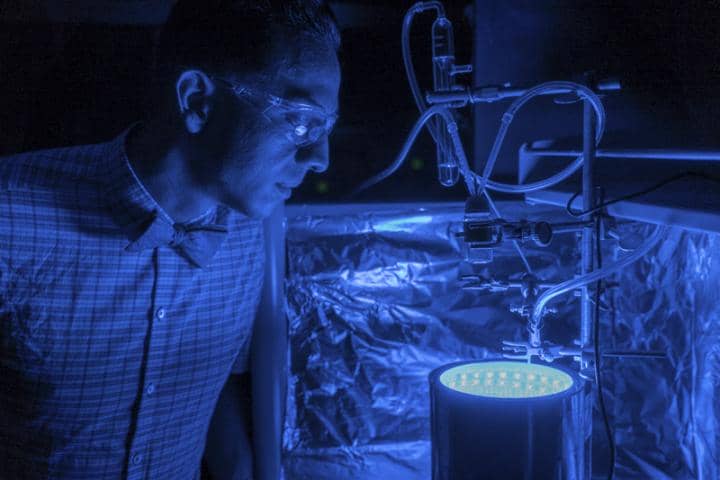Earth’s atmosphere is warming up at a fast pace, and proper measures are required to keep global warming in check. Ever since the researchers started to record the atmospheric carbon dioxide, the amount has increased by 25 percent. High concentration of greenhouse gasses like CO2 is a significant threat to this planet, as well as the life on it. Scientists have been trying to figure out a way to reduce the CO2 contents in the atmosphere. A chemist from the University of Central Florida, Professor Fernando Uribe-Romo has developed a synthetical material that can be triggered with visible light to consume carbon dioxide and produce energy, just like the plants naturally do.
Use of ultraviolet rays is the best way to trigger photosynthesis, but only 4 percent of the light coming from the sun is UV, while most of it lies in the visible spectrum. The materials that can be used to replicate the photosynthesis process like platinum, rhenium, and iridium are far too expensive.
Uribe-Romo chose titanium compounded with organic molecules to use them as the antennae of natural light. These molecules can be customized to absorb particular wavelengths of light. The chemist, along with his team, improved the process and used these molecules to absorb the blue light. They built a blue LED photo-reactor to trigger the reaction that cleaned the air of carbon dioxide, producing formate and formamides as a result.
Source: University of Central Florida
Professor Fernando and his team have the plans to improve the technology, so it can ultimately be used to make shingles for homes. These shingles will be capable of cleaning the air, while producing energy to power the homes. The process, however, is not as easy as it sounds. Uribe-Romo says:
“Tailoring materials that will absorb a specific color of light is very difficult from the scientific point of view, but from the societal point of view, we are contributing to the development of a technology that can help reduce greenhouse gasses. The idea would be to set up stations that capture large amounts of CO2, like next to a power plant. The gas would be sucked into the station, go through the process. and recycle the greenhouse gasses, while producing energy that would be put back into the power plant.”
Increasing quantities of carbon dioxide require a higher number of plants to balance oxygen requirements of the life on earth. The artificial photosynthesis process is aimed to aid the plants in an air-cleaning process to get rid of the highly concentrated greenhouse gasses.
Professor Fernando talks about his project in the video below.
The research was published in Journal of Materials Chemistry A.

